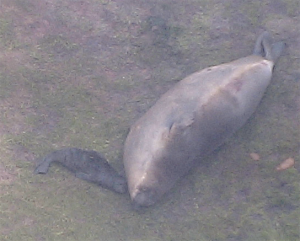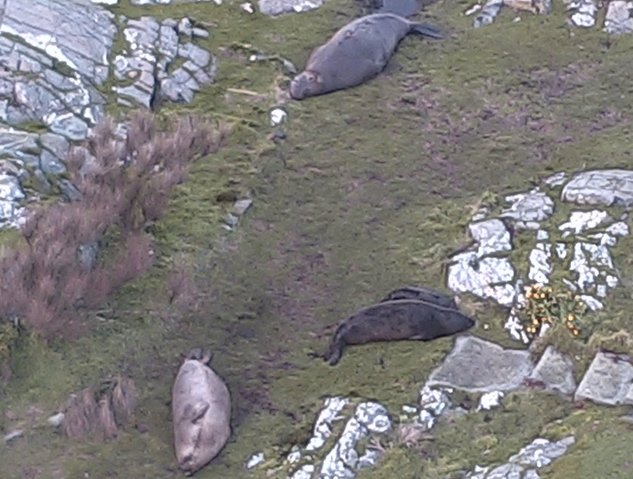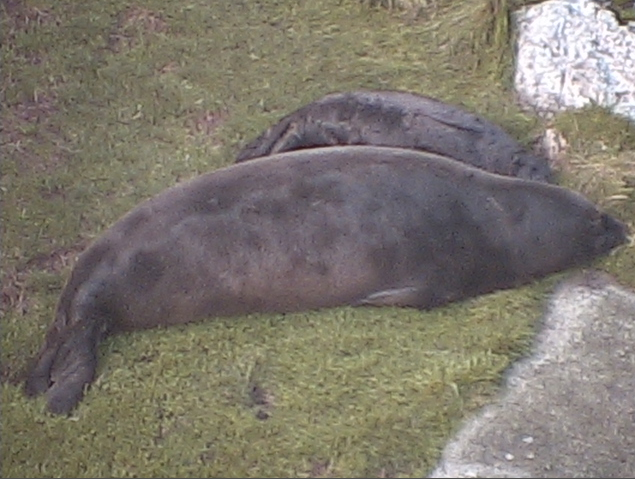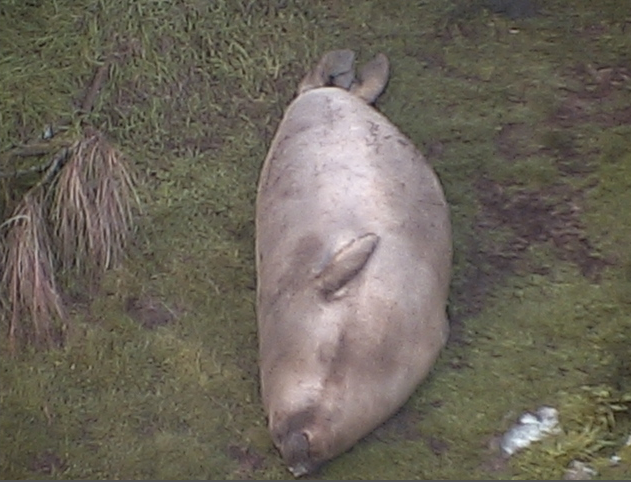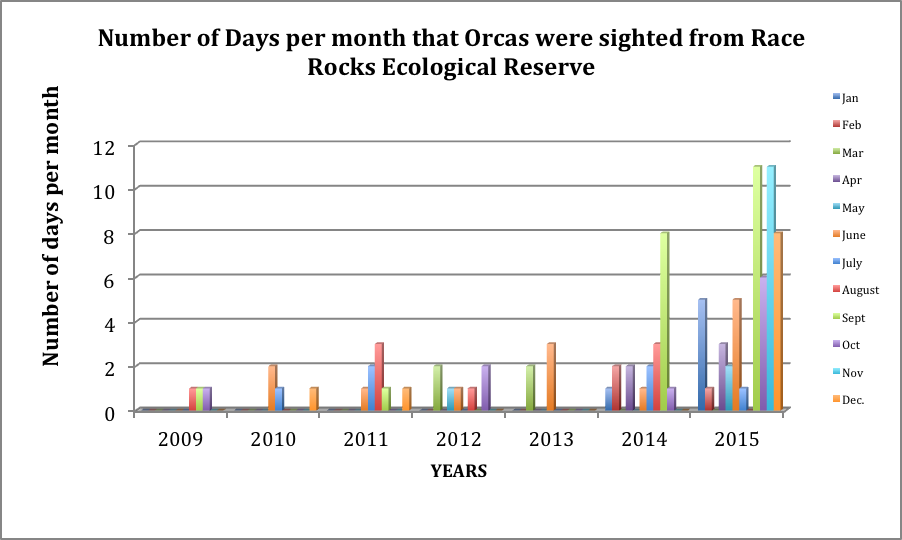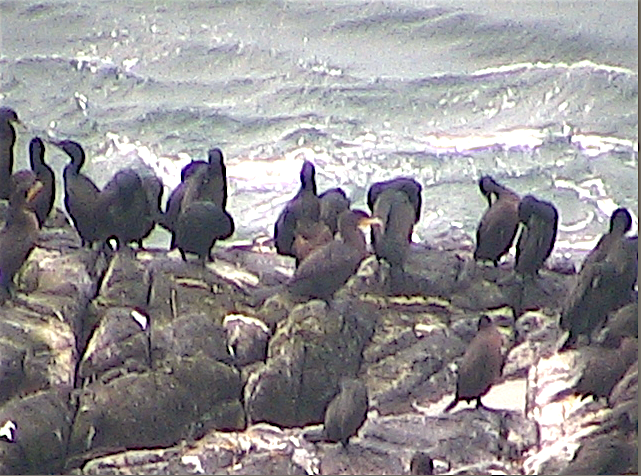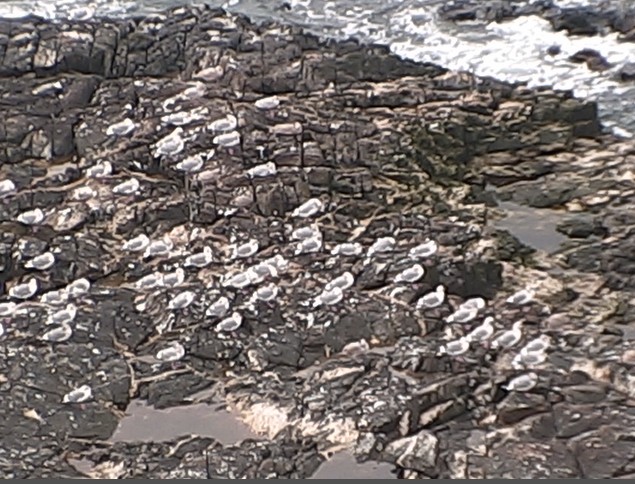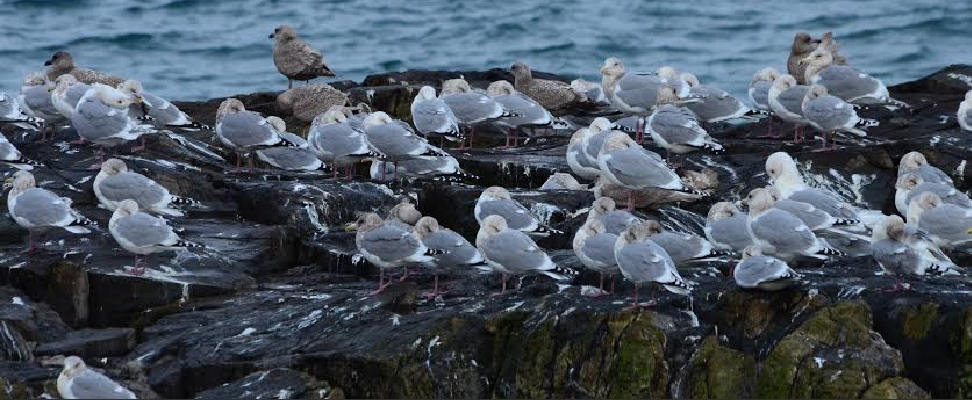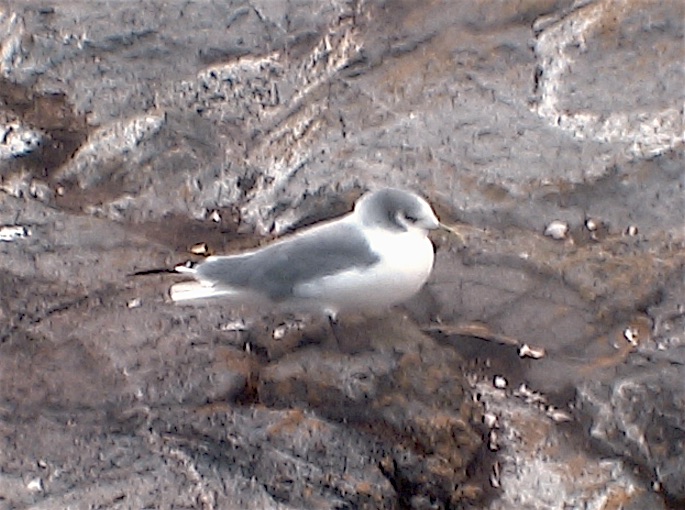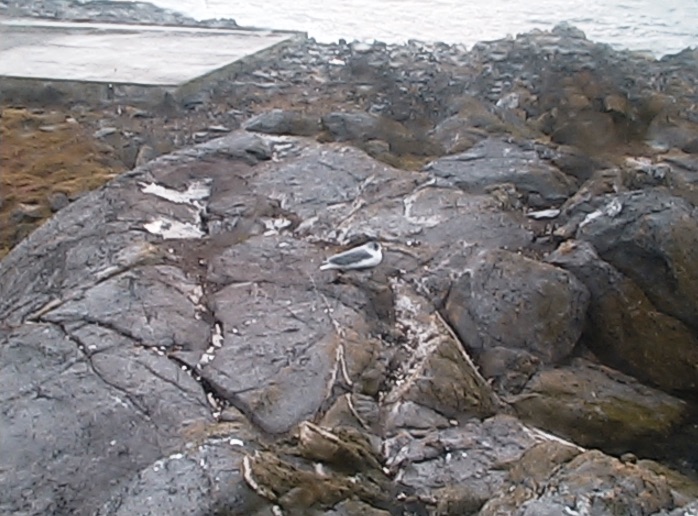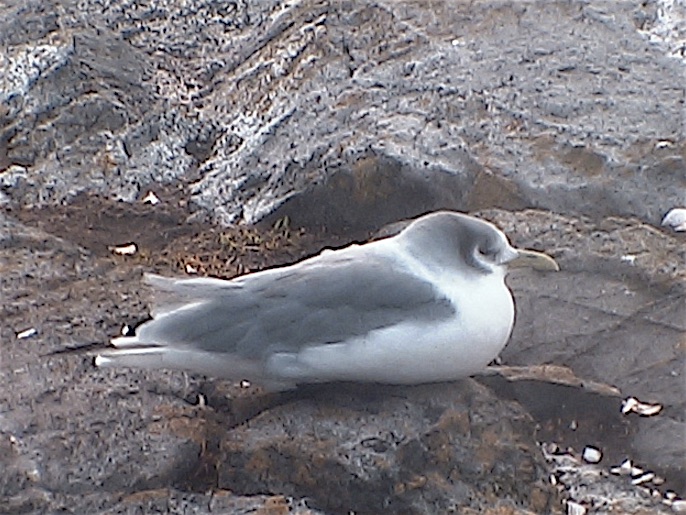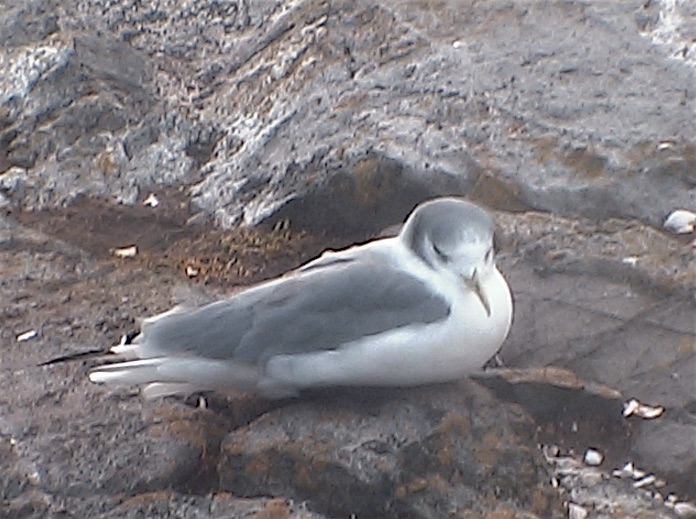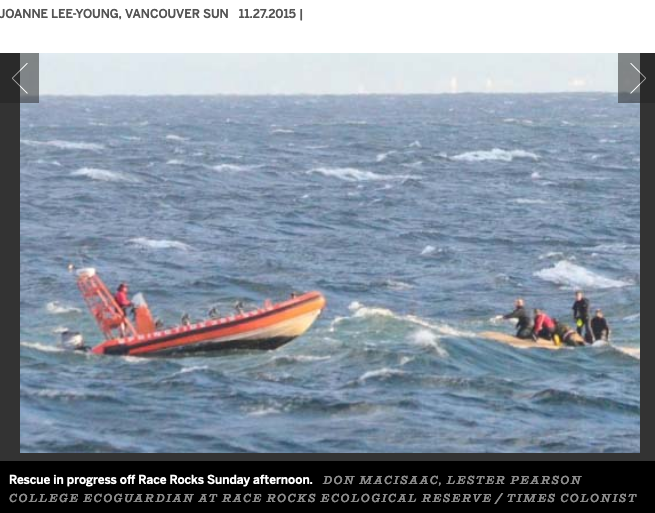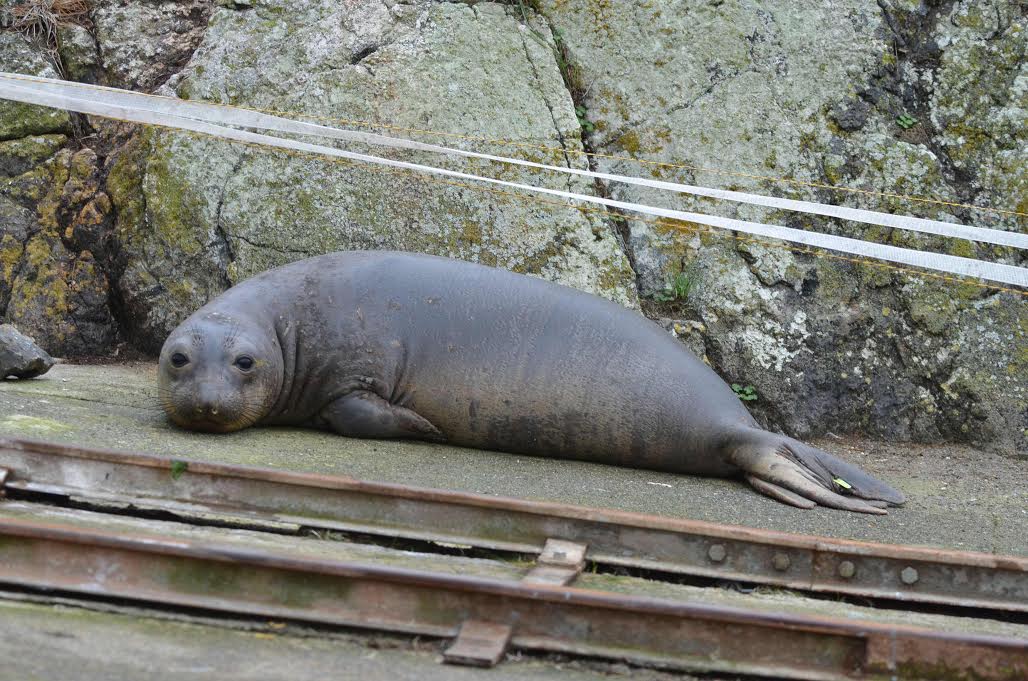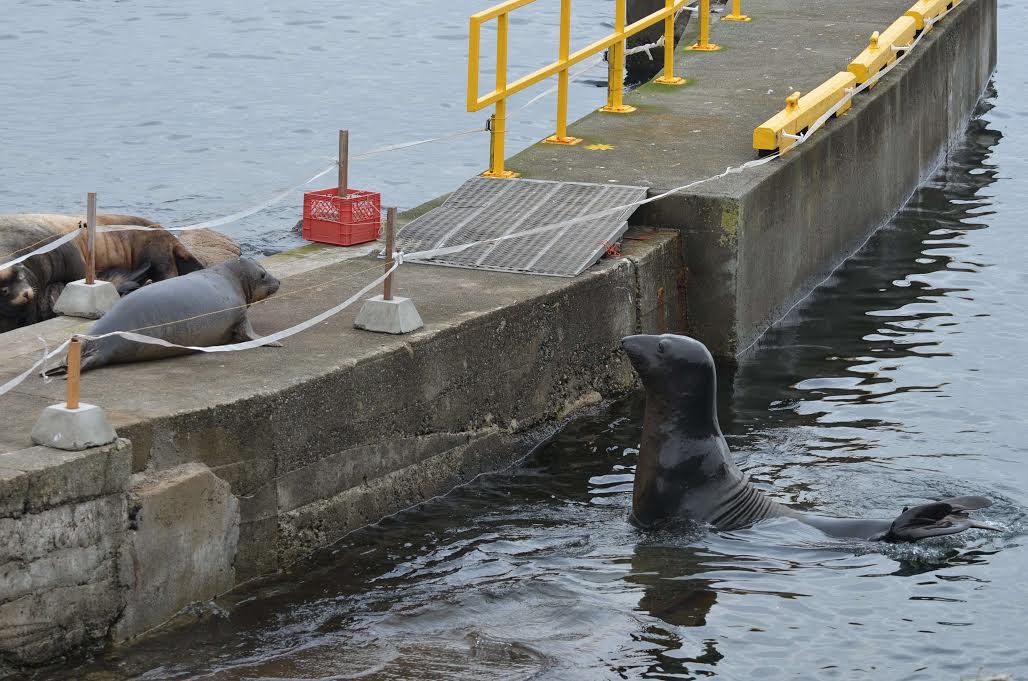This morning the large female that had been on the lawn near the other mother and pup for several weeks gave birth to a new pup sometime last night. View on the lawn on the North side of the tower on Camera 1.
Category Archives: ER Warden Report
Nucella lamellosa: Frilled Dogwinkle–The Race Rocks Taxonomy
We have somehow missed getting a photo of this Dogwinkle.. stay tuned!
Domain Eukarya
Kingdom Animalia
Phylum Mollusca
Class Gastropoda
Order Neogastropoda
Family Thaididae
Genus Nucella
Species lamellosa (Gmelin,1791)
Common Name: Frilled Dogwinkle
Other Members of the Phylum Mollusca at Race Rocks.
| Return to the Race Rocks Taxonomy and Image File |
 The Race Rocks taxonomy is a collaborative venture originally started with the Biology and Environmental Systems students of Lester Pearson College UWC. It now also has contributions added by Faculty, Staff, Volunteers and Observers on the remote control webcams. The Race Rocks taxonomy is a collaborative venture originally started with the Biology and Environmental Systems students of Lester Pearson College UWC. It now also has contributions added by Faculty, Staff, Volunteers and Observers on the remote control webcams. |
River otter and e-seals
I received this photo today of a river otter who likes curling up and going to sleep just down the slope from the remote control camera 5 from Pam Birley. Odd behaviour considering that they are usually very secretive out there on the island.
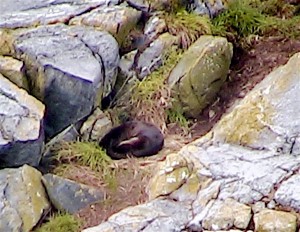 I am just doing up my final notes for my oral presentation to the NEB Kinder Morgan TMX hearings in Burnaby on Thursday, and have noted that river and sea otters have not been recognized by the consultants of the oil company as being significant marine mammals in the Strait of Juan de Fuca . Only the Humpback and Southern Resident Orcas and the Northern Sealion are considered as representative of the marine mammals in the path of tanker traffic. So we are supposed to believe that the Northern Sealion is a proxy for all the other marine mammals in terms of impact.
I am just doing up my final notes for my oral presentation to the NEB Kinder Morgan TMX hearings in Burnaby on Thursday, and have noted that river and sea otters have not been recognized by the consultants of the oil company as being significant marine mammals in the Strait of Juan de Fuca . Only the Humpback and Southern Resident Orcas and the Northern Sealion are considered as representative of the marine mammals in the path of tanker traffic. So we are supposed to believe that the Northern Sealion is a proxy for all the other marine mammals in terms of impact.
We had pointed out in past submissions that the elephant seal birthing colony is rather unique also, but no separate recognition has been forthcoming for harbour and elephant seal birthing colonies.
Today I had a look at the E-seals on the lawn using Camera 1 with the following pics.
G. Fletcher
- One male, two females and the pup at Race Rocks
- Mother elephant seal and 10 day old pup
- Is she pregnant or not?
Humpback and Orca Sightings from Race Rocks in the Strait of Juan de Fuca
In preparing for the oral presentation that the Friends of Ecological Reserves will give on January 28 in Burnaby, as an intervenor for the National Energy board Hearings, I have recently updated or graphs on Humpback and Orca sightings by the Ecoguardians at Race Rocks: The posts done by our Ecoguardians tagged for orcas or humpback whales assisted in this tabulation.
Christmas Bird Count at Race Rocks Dec 27, 2015
This year on Dec 27, the North East swell was too significant to allow the Ecoguardian to launch the station boat to pick us up for the Christmas Bird Count, so Alex Fletcher completed it on his own. Due to the high winds, there were very few birds remaining on the island but he did get a good count of those there by walking around the island. From remote camera 1 I was able to see the two concentration of gulls and the one group of Cormorants on the main island.
- General shot of gulls on the southwest side of the island
- General shot of the gulls on the north- east side of the island
Alex got some good pictures of the gulls and it seems that most if not all are Thayer’s Gulls.
See the Christmas Bird Counts at Race Rocks back to 2001:
Christmas Bird Count 2015
bald eagle: 3 A, 2 J
Cormorants: 174
black oyster catchers: 40
Thayer’s gulls 192
Buffleheads 2 (1 pair)
Black turnstones: 29
Dunlin: 2
Harlequin Duck 1
Marine mammals:
Northern sea lion: 76
Cali sea lion: 40
Rissa tridactyla: Black legged kittiwake
- Black-legged Kittiwake
- Black-legged Kittiwake Rissa tridactyla
- Photos by Pam Birley
We received an e-mail today from Pam Birley of Leicester England with the photos of this Kittiwake she had taken using the remote controlled camera 5. This is a new photo record for Race Rocks Ecological Reserve.
Scientific classification
Kingdom: Animalia
Phylum: Chordata
Class: Aves
Order: Charadriiformes
Family: Laridae
Genus: Rissa (Stephens, 1826)
Species: tridactyla
Rissa tridactyla
Other Members of the Class Aves at Race Rocks.
and Image File |
 The Race Rocks taxonomy is a collaborative venture originally started with the Biology and Environmental Systems students of Lester Pearson College UWC. It now also has contributions added by Faculty, Staff, Volunteers and Observers on the remote control webcams. The Race Rocks taxonomy is a collaborative venture originally started with the Biology and Environmental Systems students of Lester Pearson College UWC. It now also has contributions added by Faculty, Staff, Volunteers and Observers on the remote control webcams. |
Victoria dive club members rescued after boat capsizes
Victoria dive club members rescued after boat capsizes
Members of a dive club were rescued after their boat capsized off the coast of Victoria early Sunday afternoon.
The Joint Rescue Co-Ordination Centre said it received a call at 1:50pm indicating a boat had capsized at Race Rocks, an ecological reserve popular with divers. All nine members were accounted for at that time and the JRCC said two auxiliary Coast Guard vessels arrived within 30 minutes.
Eight of the nine dive club members were wearing dry suits, according to the JRCC. All were taken to Pedder Bay near Victoria where ambulances and one helicopter were waiting. One person was taken to hospital with minor injuries.
The boat was equipped with a handheld radio, making it possible for the members to quickly call the Coast Guard themselves, according to a JRCC spokesperson.
However, in a posting on its Facebook page, the “all-volunteer” Royal Canadian Marine Search and Rescue station in Victoria said it was tasked with a mayday call “for nine people in the water from an overturned vessel 300m south east of Race Rocks. The scuba divers were in a 14’ open aluminium boat with up to 10′ waves. They were extremely lucky to have been able to call for help and not have Dover’s (sic) down at the time.”
The post continued: “Two divers were treated for hypothermia by BC Ambulance and the Fire Department. This is our third call to Race Rocks for divers with 1 fatality. Please use extreme caution around Race Rocks and only dive there with very experienced divers.”
It also said: “(One person dove under Vessel to retrieve hand held marine radio to call for help) Weather was cause of vessel overturning – sea conditions 4/5 FT waves piling up into 10FT waves.”
Meanwhile, the home church of a British man killed while scuba diving at Race Rocks in July is calling on British Columbia to launch a coroner’s inquest into his death.
Kings Cross Methodist Church in London says an investigation into Timothy Chu’s death should happen both for the sake of public safety and for Victoria’s reputation as a prime tourism destination.
Chu was on vacation in B.C. when he hired a guide for a day of diving on July 5. The 27-year-old British Army lance corporal was carried away by strong underwater tidal currents and his body didn’t surface for seven weeks.
Chu’s family says problems with the business that organized the charter dive may have contributed to his death.
His family says the centre failed to equip Chu properly, proceeded with the dive despite the dangerous conditions and employed a dive master who was unfamiliar with the area.
With Canadian Press files
Race Rocks–too familiar
Ed Note: This article is an important one that emphasizes the risks that are taken by the public in the waters around race Rocks. It is particularly noteworthy in that it also points out the risk to those involved in Marine Rescue.
From the Goldstream gazette,
- Nov. 24, 2015 7:00 p.m.
Rescue society always there to help
Race Rocks is an area David Best is becoming all too familiar with.
Rescue society always there to help
Race Rocks is an area David Best is becoming all too familiar with.
A member of the Victoria Marine Rescue Society Station 35, the 31-year-old has been called to the ecological reserve at the east entrance of the Juan de Fuca Strait three times in the last year.
Two of those rescues occurred within the last few months. One turned deadly when 27-year-old British police officer Timothy Chu became separated from his dive master and drowned.
On the afternoon of Nov. 15, Best was at home watching TV when he received another mayday call to respond to Race Rocks. This time nine divers were in the water after their boat was overturned by a ferocious wave.
Best, along with crew members Mike Deigan, Mike Graham and Earle Shirly, jumped into their Titan 400 rescue boat and left Ogden point, arriving at the scene 25 minutes later. Members from station 37 in Sooke also sprang into action.
“You are trying to think ahead as to what you need to have ready the second you show up,” said Best. “You are also thinking, what am I going to see here? Everyone in the boat is thinking the same thing.”
High winds were producing large waves between eight to 10 feet high. The crew arrived to find several people sitting on the haul of the overturned seven-metre aluminum boat. A couple more were in the water, clinging onto the boat’s side.
Standing on the back of The Tolonen, Best and one of his colleagues tossed a throw bag into the water, which releases 50 feet of line for victims to grab and be pulled to safety. The first man pulled in was an older fellow who was plummeted with huge waves crashing over his head. Once on board, the team discovered the man had mild hypothermia.
“He was shaken and cold, obviously. Somewhat in shock I think,” said Best, who estimates the man had been in the water, holding onto the overturned boat for a good hour. “He was pretty sore. He was just thankful that he was able to get on something solid and warm.”
Repeating the drill, station 35 pulled three more people from the frigid water and Sooke rescued another five. Two of the divers (from the CFB Esquimalt-based recreational Aquarius Dive Club) had mild hypothermia and others were left shaken by the ordeal. All but one of the nine people were wearing wet or dry suits.
Due to the heavy currents and strong winds often found at Race Rocks, Best said the area is dangerous to scuba dive. The only people that should be there are those who know what they are doing, but even then things can still go wrong.
Fortunately, the Victoria Marine Rescue Society is there to make sure help is always available to mariners in distress. The team of volunteers dedicate their time providing 24-hour, year-round emergency search and rescue services on the Victoria waterfront, stretching as far west as Sooke and east to Oak Bay. On average, 50 to 60 rescues are conducted every year.
Best has been with the station for a year-and-a-half. Every time he goes out on a rescue, he risks his own life to help save others.
“(It’s) a passion for adventure and a passion to help people,” said Best, who was out on the water training with the team during last week’s big storm.
“It helps me sleep at night knowing that I have a fire department down the street that if I have a fire in my house, they will help rescue my family and myself. I feel that this country and this town has given me more than I can ask for so I try to return the favour whatever way I can.”
The Victoria Marine Rescue Society is always looking for new volunteers and the vast majority of expenses are covered through donations and fundraising events. For more information visit vmrs.org.
Elephant seal behaviour
I received this email from the ecoguardian about interesting elephant seal beahviour:
- big boat
A few weeks ago we saw a E-seal pup from Ano Nuevo (see the pictures attached). When it encountered some difficulty in getting off our docks, one of the larger E-seals was behaving very motherly. It was quite panicked and monitoring the pup closely swimming from one side of the dock to the other, reaching up to see it. In the photo I’ve attached you can see her peering up to see the pup, which she was doing over and over again. I have since seen these two around together in the water as well.
The research says that mothers are only with pups for 4 weeks – so I’m intrigued by this behaviour as this pup must be about 9 months old or so…maybe some mothers stay around for longer? Or there is other behaviour that I’m not aware of……
Nine divers rescued after boat capsizes near Race Rocks, TC Nov 17, 2015
Also see Ecoguardians report at https://www.racerocks.ca/9-divers-rescued-after-boat-capsized/
Richard Watts / Times Colonist
November 15, 2015 11:18 PM

Rescue in progress off Race Rocks Sunday afternoon. Photograph By Don Macisaac/Pearson College, Race Rocks
See more at: http://www.timescolonist.com/news/local/nine-scuba-divers-rescued-in-rough-seas-off-race-rocks-1.2111723#sthash.37bWnQHs.dpuf
UPDATED: Two volunteer rescue crews, one from Victoria and the other from Sooke, improvised a tag-team-style effort to pluck nine stricken scuba divers off a bouncing, capsized boat Sunday afternoon.
Jason van der Valk, coxswain of the Royal Canadian Marine Search and Rescue craft based in Sooke, said his crew started the rescue by throwing a line to the boat capsized near Race Rocks, and pulling first one, then two divers to safety from the water.
The Sooke boat then moved aside while its crew checked out the medical condition of the two rescued divers. Meanwhile, the Victoria boat moved in and repeated the heaving-line rescue for one more diver. Then, it was the Sooke boat’s turn again.
The strategy was repeated until all nine recreational divers had been pulled to safety. They were taken to Pedder Bay Marina, where ambulances and helicopters were waiting. None suffered anything worse than mild hypothermia and seasickness.
Van der Valk said the dual-team rescue had never been rehearsed or tried before. But after countless hours of drills and hard training, rescue crews learn to put together best procedures on the spur of the moment.
“That’s the first time,” he said in a telephone interview. “But just knowing how everybody is going to operate it just went like clockwork.”
All nine rescued divers are members of a recreational diving club called the Aquarius Dive Club, based at CFB Esquimalt. Eight were wearing cold-water drysuits. One person, the boat driver, was without a dive suit.
Sara Helmeczi, acting spokeswoman for CFB Esquimalt, said the Aquarius Club is for service men and women and associated members from the public. It is not a military body.
Helmeczi said when the divers arrived at Race Rocks on Sunday, they decided it was too rough and tried to head elsewhere, but were swamped by waves.
She said four of the nine divers rescued on Sunday are military personnel, so the Canadian Armed Forces will conduct a safety investigation into the incident.
Van der Valk said the first call came in about 2 p.m. on Sunday, saying there were five people in a capsized boat near Race Rocks.
“We didn’t know much detail at first,” said van der Valk. “But they never like to delay, so it was just ‘Go! Go! Go!’ ”
He said Race Rocks, near the eastern entrance to the Strait of Juan de Fuca, is midway between Sooke and Victoria stations, so both responded in their Zodiac-style jet boats, Sooke with a crew of six and Victoria with five.
Van der Valk said the waves were four to six feet high at Race Rocks. When rescuers arrived at the scene, they could see four people in the water clinging to the boat and five sitting on top of the overturned hull. He estimated they had been in the water for 45 minutes to an hour.
“The waves were breaking over the boat and quite frankly I’m amazed they were able to hang on,” said van der Valk. “I’m surprised one of them hadn’t let go or fallen off and drifted away.
“Given the state of the sea, there is no way they could have swum back to the boat.”
Waiting nearby was a whale-watching boat, the Spring Tide, which had temporarily set its passengers on Race Rocks and stood by to help, if needed. A recreational fishing boat was also standing by.
But van der Valk said the two rescue craft have a special low ramp at the stern, making it easy to pull tired people from the water. As jet boats, they also have no propellors to cut feet treading water.
Don Macisaac, eco-guardian of Race Rocks, said his fellow guardian and fiancée, Nina Yousefpour, noticed the dive boat, which was initially upright, while doing chores. The two live full time on Race Rocks.
A short while later, the two saw the overturned boat with people waving, attempting to attract attention.
Macisaac said Yousefpour helped co-ordinate some of the emergency radio communication, including to fire officials assisting with ambulances at Pedder Bay. Meanwhile, Macisaac helped the Spring Tide unload its passengers and push back off.
Race Rocks, an ecological reserve managed by Pearson College, is normally off limits to the public.
Macisaac said the ocean temperature is about 9.7 C. “If they hadn’t been wearing wetsuits they would have been in a lot of trouble.”
This is the second emergency at Race Rocks in the last few months.
On July 5, Timothy Chu, a 27-year-old British police officer, became separated from his dive master and drowned. His body was recovered on Aug. 27.
rwatts@timescolonist.com
– See more at: http://www.timescolonist.com/news/local/nine-scuba-divers-rescued-in-rough-seas-off-race-rocks-1.2111723#sthash.37bWnQHs.dpuf
Other media covering the event appeared at:
- http://www.komonews.com/news/local/Whale-Watch-Crew-Rescues-9-People-from-Capsized-Boat-350810111.html (improper photo credits given)
- http://www.vancouversun.com/mobile/news/vancouver/dive+club+members+rescued+afer+boat+capsizes/11519240/story.html (improper photo credits given)
- http://www.yyjnews.ca/nine-scuba-divers-rescued-in-rough-seas-off-race-rocks/
- ww.cheknews.ca/race-rocks-divers-rescued-122589-122589/
- http://www.cfax1070.com/News/Top-Stories/Nine-divers-rescued-after-boat-capsizes-at-Race-Ro
- http://www.cknw.com/2015/11/15/nine-rescued-after-dive-club-boat-capsizes-near-victoria/
- http://www.cbc.ca/news/canada/british-columbia/dive-club-rescued-off-coast-of-victoria-b-c-after-boat-capsizes-1.3320261
- http://www.theprovince.com/health/nine+rescued+after+boat+capsizes+near+race+rocks+vancouver+island/11519223/story.html
- http://www.victoriabuzz.com/2015/11/9-photos-from-yesterdays-rescue-off-of-race-rocks-after-vessel-overturns/ (improper photo credits given)

